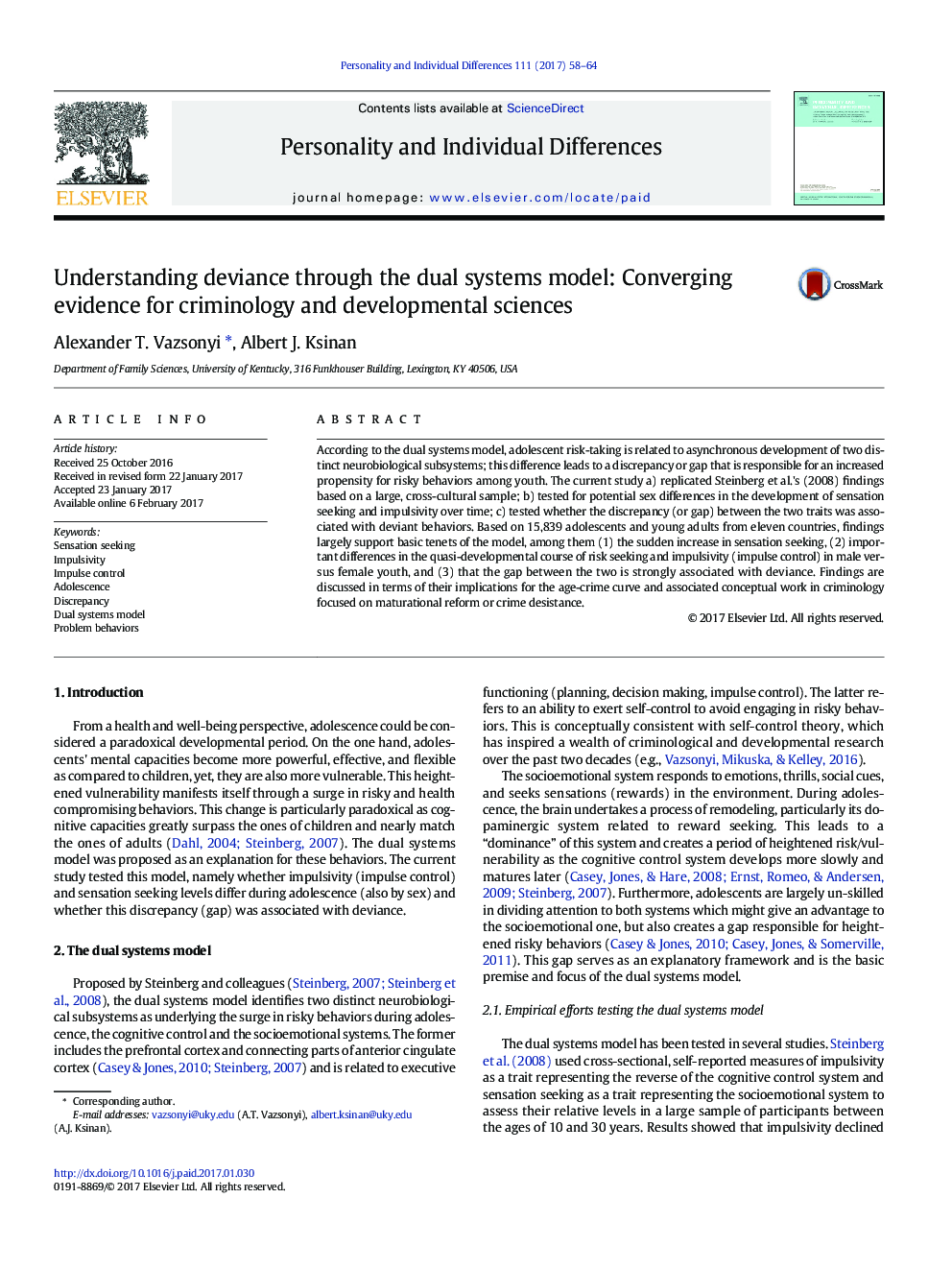| Article ID | Journal | Published Year | Pages | File Type |
|---|---|---|---|---|
| 5035921 | Personality and Individual Differences | 2017 | 7 Pages |
â¢Study tested the dual systems model on 15,000 + respondents from 11 countries.â¢Tested model and its premises from early adolescence to adulthood (12 to 27).â¢Sex differences were found for sensation seeking and impulsivity/impulse control.â¢The observed gap and maturation explained about one third of variability in deviance.
According to the dual systems model, adolescent risk-taking is related to asynchronous development of two distinct neurobiological subsystems; this difference leads to a discrepancy or gap that is responsible for an increased propensity for risky behaviors among youth. The current study a) replicated Steinberg et al.'s (2008) findings based on a large, cross-cultural sample; b) tested for potential sex differences in the development of sensation seeking and impulsivity over time; c) tested whether the discrepancy (or gap) between the two traits was associated with deviant behaviors. Based on 15,839 adolescents and young adults from eleven countries, findings largely support basic tenets of the model, among them (1) the sudden increase in sensation seeking, (2) important differences in the quasi-developmental course of risk seeking and impulsivity (impulse control) in male versus female youth, and (3) that the gap between the two is strongly associated with deviance. Findings are discussed in terms of their implications for the age-crime curve and associated conceptual work in criminology focused on maturational reform or crime desistance.
